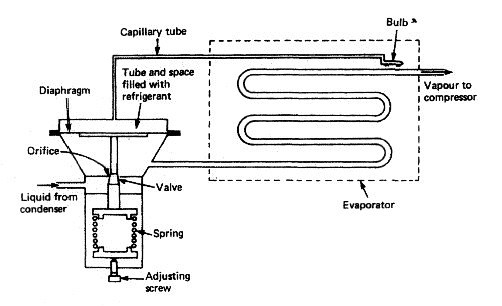
Componenets required for a refrigeration plant on board cargo ships
Refrigeration is a process in which the temperature of a space or its contents is reduced to below that of their surroundings. Heat is a form of energy and is indestructible and it is not a substance and can be dealt with only from its effect on substances. When two substances are brought into thermal contact, the heat starts to flow one into the other until they are both at the same temperature, at which no more heat can flow. At this point, where no more heat can be extracted known as absolute zero.
In all refrigeration, heat is collected in a suitable fluid and this fluid is removed from the space substance being cooled carrying the heat with it. Such fluid known as refrigerant.
In all refrigeration, heat is collected in a suitable fluid and this fluid is removed from the space substance being cooled carrying the heat with it. Such fluid known as refrigerant.


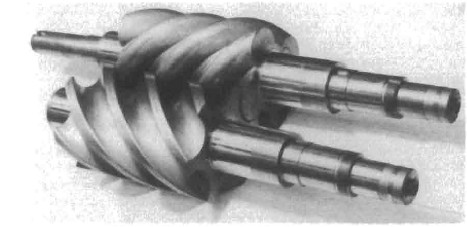
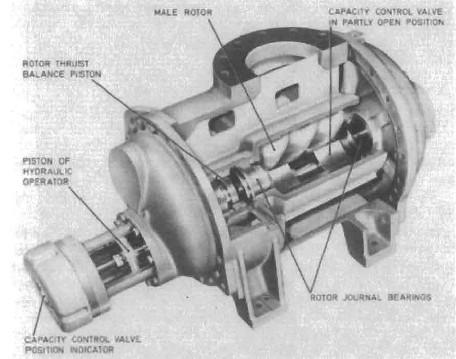
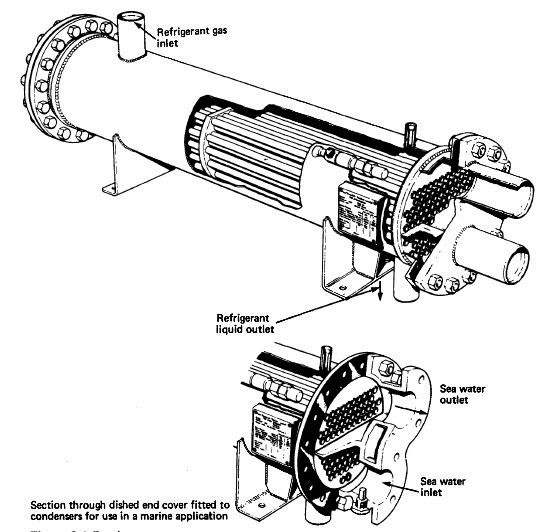
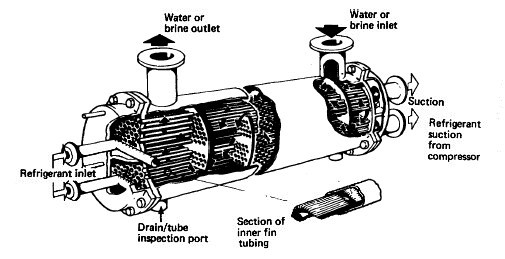 Fig:Evaporator
Fig:Evaporator